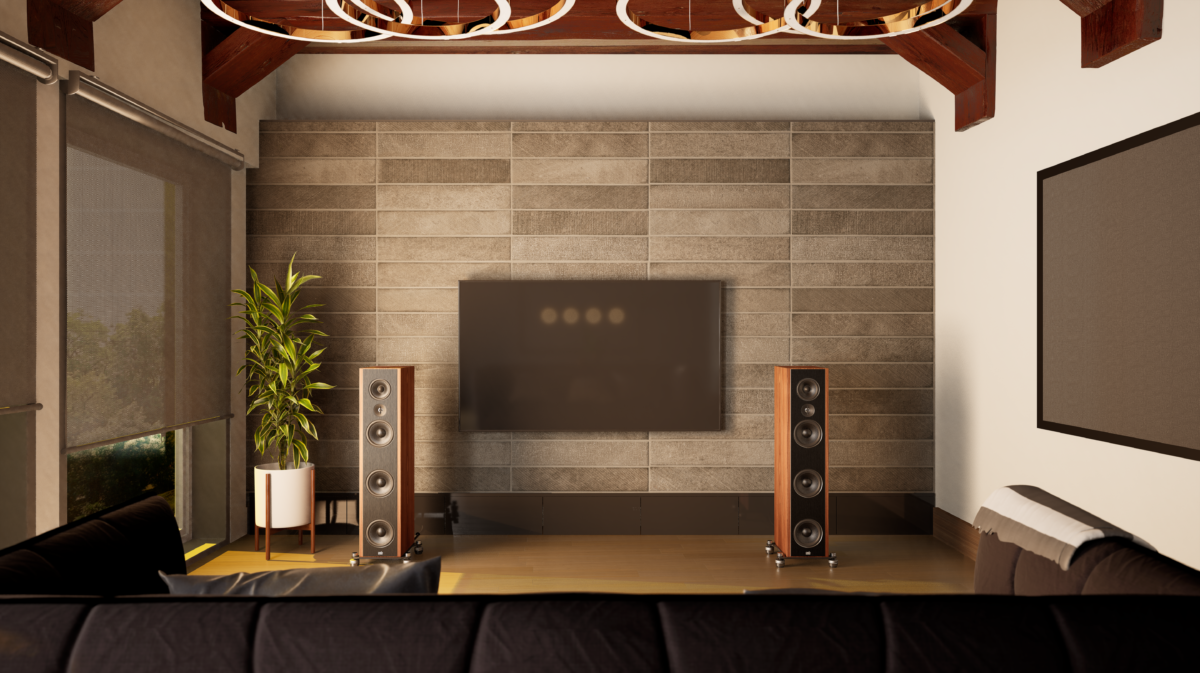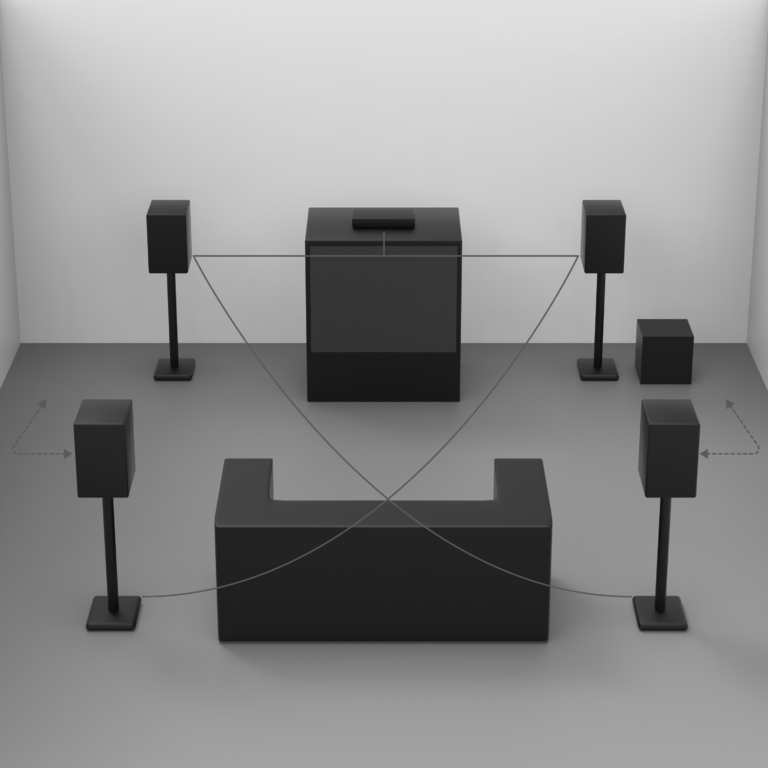How to Setup a Home Theatre System
3430 Views |

Setting up new home theatre speakers to get the best room acoustics can seem like a daunting task. Speaker placement is one of the most important elements of acoustic performance and when done correctly, will best represent what your speakers are capable of. With a few simple tricks of the trade and some room observations, you can get it right.
Three Key Elements: Speakers, Listener, and the Room
The first things to keep in mind are that soundwaves come out of your speaker, you are the listener, and you sit in a room with soundwaves bouncing off the walls around you. All three of those things matter when it comes to getting great acoustic performance.
Figuring Out Where to Place Your Speakers
Generally, the ideal placement of your speakers in relation to your ears should form an equilateral triangle. Since this may not be achievable for all rooms, make sure that the distance of one speaker to the other is shorter than the distance from your speakers to your ears.
Aim to have the tweeters of your main speakers at the same listening level as your ears when you are seated.
Position the speakers vertically instead of horizontally to attain good high-frequency dispersion. This allows for the widest “sweet spot” of definition in that range.
When you have found your ideal listening spot equally distant from both speakers, angle them inward about 5 to 10° degrees to produce the best convergence of high frequencies for your listening position. To figure out how much you need to angle the speaker, picture a straight line being drawn from the axis of your ears to the center of the tweeters.

Figure 2: Positioning Speakers for your Home Theatre System
Adjusting Speaker Levels to Suit your Listening Position
The further away you are from your speakers, the more direct sound waves coming out of your speaker will be reflected onto the surrounding walls and surfaces, altering the original spatial relationships of a recording.
In the case that one speaker is further away from your listening position than another speaker, you may need to drive more power from the speaker that is further away to compensate for the level differences.
The best practice is to maintain the correct speaker height and a relatively symmetrical distance from your ears to the speaker to get the best high-frequency definition and spatial imaging.
How Your Room Affects the Sound
Natural resonances called room modes are caused by the geometry of your room walls. The important thing to note here is that there is a null and dip of bass response at the halfway point in your room. As you adjust your listening position to suit your needs, keep this in mind and consider moving slightly away from the center (lengthwise) of the room.
Room boundaries affect the sound – especially the bass frequencies. Placing a speaker closer to the boundaries of a room will increase the proportion of bass response due to the enclosing reflections of nearby spaces. For the greatest bass response, place the speakers near a corner (floor or ceiling). The convergence of the two walls and floor will create a natural megaphone-like sound.
Test it out. The distance from your speakers to your room walls will largely affect the frequency, number, and strength of the secondary reflections, which changes the sonic definition of the original audio. Try out different speaker distances and minor adjustments of your listening position using a reference mix that covers a wide frequency range. Use your ears to judge where you can get the best clarity of sound for your listening experience.
Ensure that soft surfaces are added to absorb, rather than bounce sound. Sound-absorbent elements like rugs, draperies, table clothes and wooden surfaces are all cost-effective ways to dampen acoustic resonance. If you’re willing to go the extra mile, install acoustic panelling for audiophile-grade isolation.



